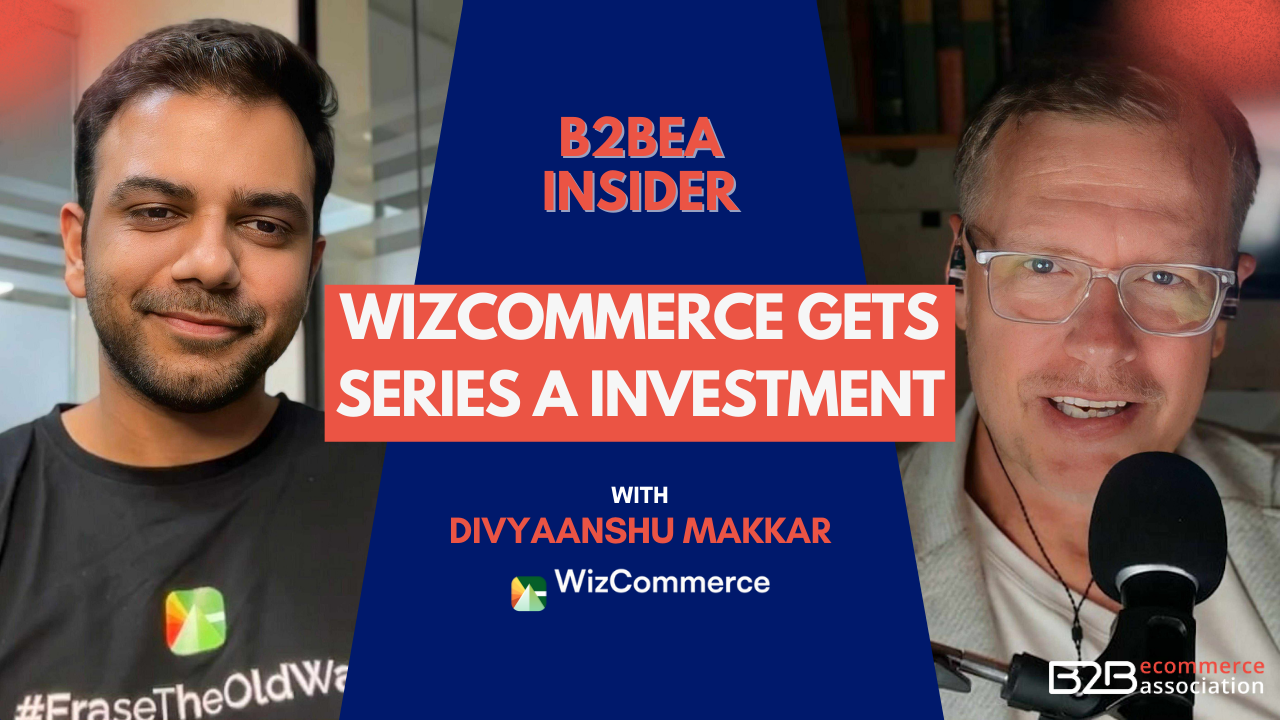When Black Friday Creates B2B Buyers

What I learned when gift season collided with industrial eCommerce…
Before I joined Amazon, Black Friday meant one thing in B2B: a day off.
I’d spent over a decade working with manufacturers and distributors. We all knew the rhythm. Black Friday wasn’t an event, it was a shutdown. Customers were closed. Order volumes dipped. The only people in the office were volunteers, holding down the fort while the rest of the company enjoyed the long weekend.
So when I joined Amazon’s B2B team, I assumed I’d be one of the lucky few with a quiet desk during the holiday rush. Unlike my consumer-facing counterparts, I wasn’t prepping for lightning deals or traffic spikes.
I was wrong.
The Week Before Thanksgiving
It started subtly, a few oddball SKUs moving faster than expected.
Not our usual repeat-purchase products. Not replenishment staples.
These were strange one-offs. Highly specific. Niche. Professional-grade.
- Water stones from an industrial abrasives manufacturer
- Commercial cookware designed for restaurant kitchens
- Precision measuring tools from a Japanese supplier
- High-end stethoscopes
Every one of them tied to a respected brand. Every one of them selling at volumes that didn’t make sense, not for that week, not for that time of year.
We started scrambling. Our team was calling suppliers, trying to secure last-minute inventory on items we never expected to feature in our Q4 forecasts. Suppliers were caught off guard, most had already wound down for the holiday.
But this wasn’t a supply chain problem. It was a discovery problem.
These Were Gifts
Once we stepped back and looked at the pattern, it started to make sense.
Our vendor team had worked hard to bring well-known professional brands onto the platform. Brands with real loyalty, the kind of brands people trust with their work.
And it turns out, the people buying those products the week before Black Friday weren’t contractors or procurement managers.
They were daughters. Spouses. Friends.
The daughter of a woodworker who knew exactly which sharpening stone her dad swore by.
The partner of a med student who’d heard complaints about cheap stethoscopes.
The home chef married to a line cook who wanted the same pan they used at work.
They weren’t shopping randomly. They were buying deliberately because the brand meant something to the person receiving the gift.
Then January Came
Here’s where it got even more interesting.
Come January, when those professionals returned to work, something changed.
They remembered.
They remembered that their gift the tool or equipment or device they already trusted — had come from Amazon.
They remembered that the brand they used every day was available with fast shipping, reviews, and transparent pricing.
And they came back. Not just to browse. To buy.
We watched it happen four years in a row. A spike in traffic to crossover SKUs in November. A surge in sales. And then unlike the typical holiday cycle in B2C, the numbers held. The baseline moved up. Professionals who first saw us through a gift kept coming back as business buyers.
This Wasn’t a Campaign. It Was a Pattern.
We didn’t engineer this outcome. We uncovered it.
Because what looked like a short-term spike turned out to be something else entirely: a new entry point into the customer journey.
That stethoscope? That water stone? That perfectly balanced kitchen pan?
Those weren’t just gifts.
They were brand signals.
Signals that said: “This is where you can find what you need, even for work.”
We talk a lot in B2B about customer adoption. Internal training. Workflow integration. Punchout catalogs.
But what we saw here was something different. The beginning of an adoption journey that started at home.
So What Does This Mean for Everyone Else?
Most manufacturers and distributors don’t think about Black Friday. Not seriously.
Their customers are closed. Their sales team is quiet. Their eCommerce platform might even be running on autopilot.
But this pattern raises a different question:
Are there SKUs in your catalog with crossover appeal, that show up in both personal and professional contexts?
You might be surprised. A tool that works as well in a garage as on a job site. Safety gear that’s comfortable enough to want, even when it’s not expensed. Specialty items that rarely get ordered through procurement, but are deeply loved by the people who use them.
These products often live deep in your long tail. They’re rarely promoted. But they hold trust. And in the hands of the right gift giver, they become more than a purchase.
They become the moment someone discovers your brand.
And That’s Where It Starts
Because when a gift leads someone to your catalog, it’s not just a feel-good moment.
It’s a visibility shift.
You didn’t just win a transaction. You earned consideration.
You surfaced in a context where you weren’t expected.
And the next time that professional needs to reorder, they’re not starting from scratch.
They already know where to look.
While the rest of the industry powers down for the holidays, there’s opportunity hiding in plain sight. It doesn’t take a campaign. Just awareness, availability, and a willingness to think about your catalog in a slightly different way.
Because sometimes, discovery starts with a gift.









